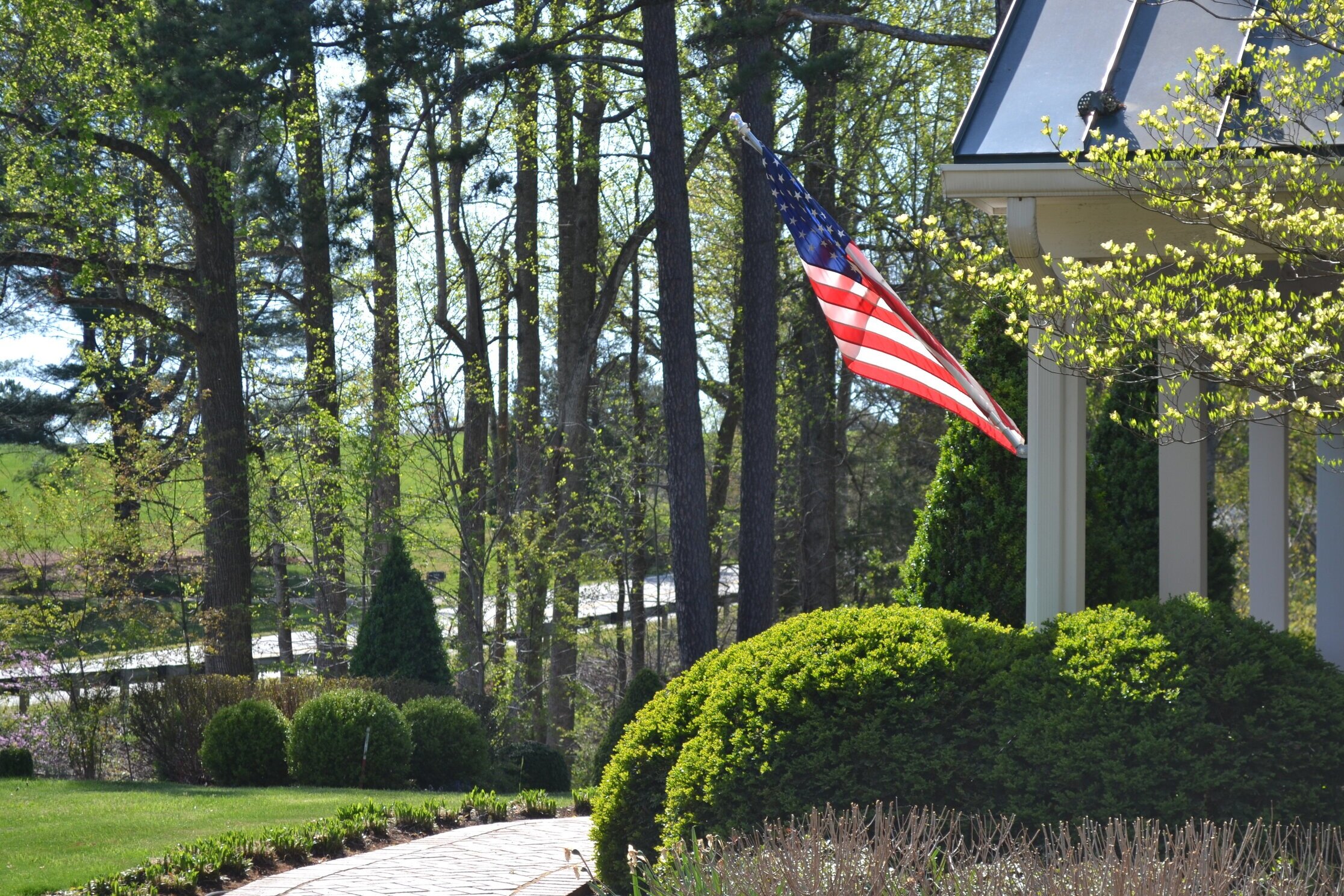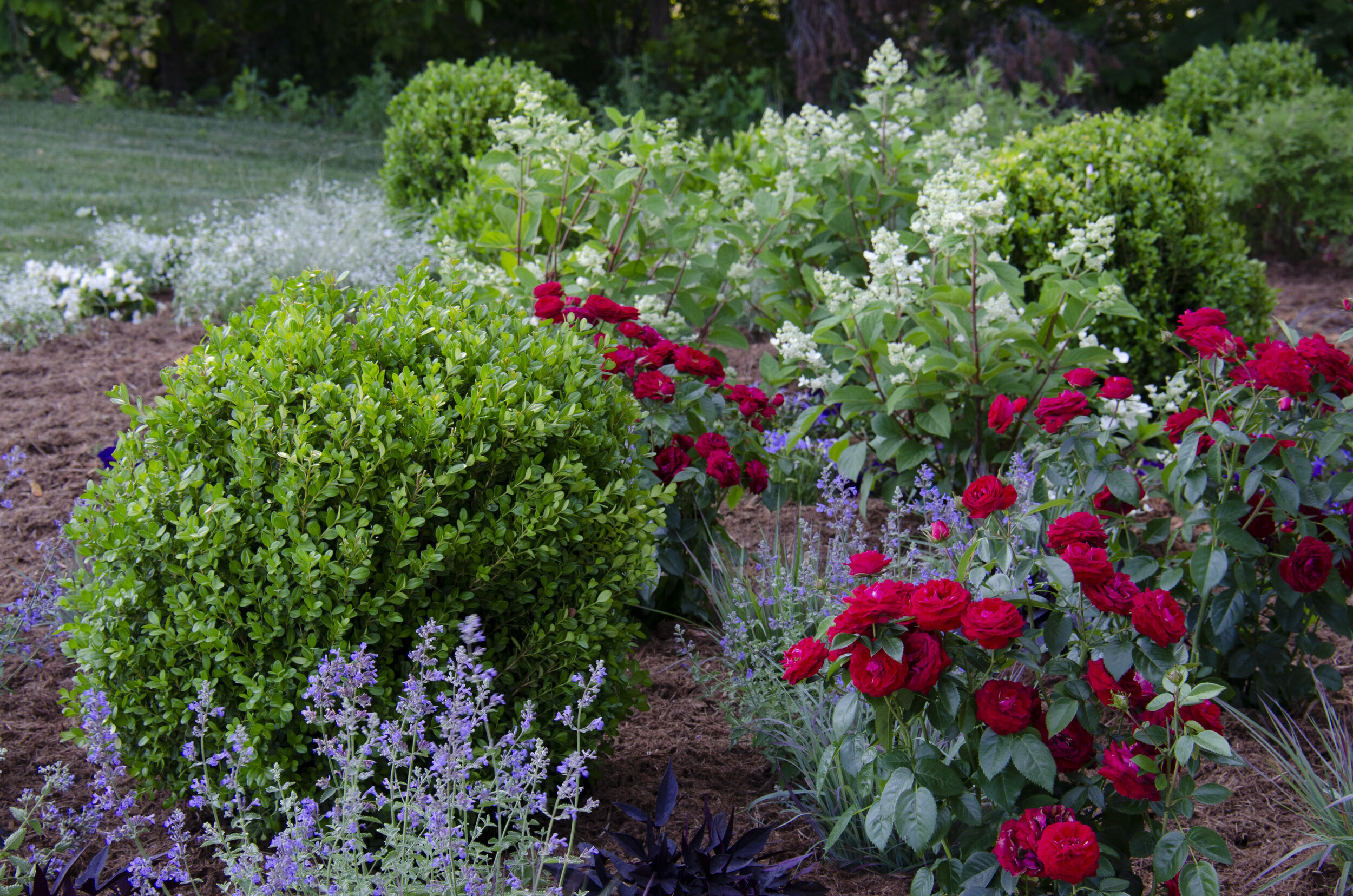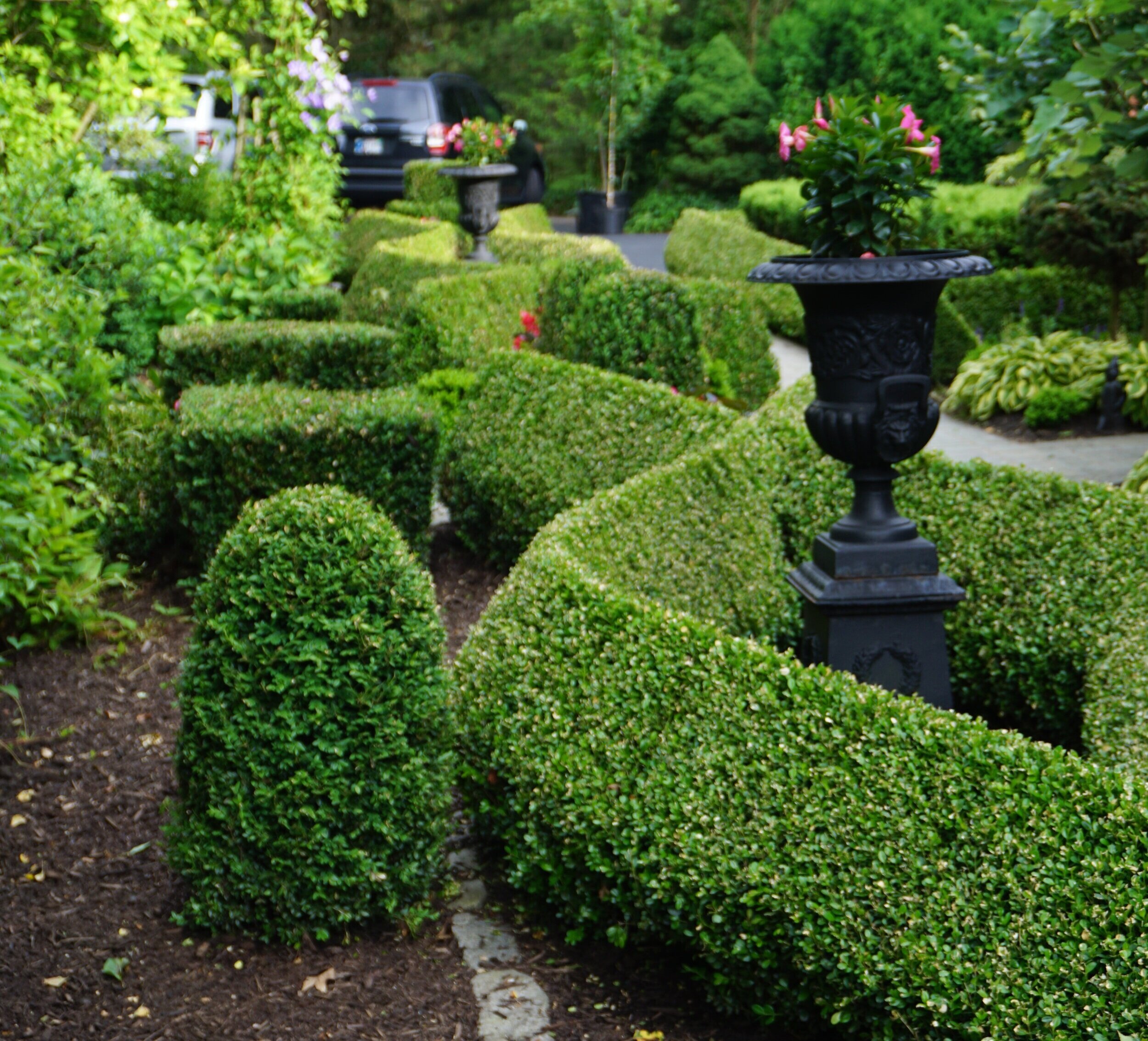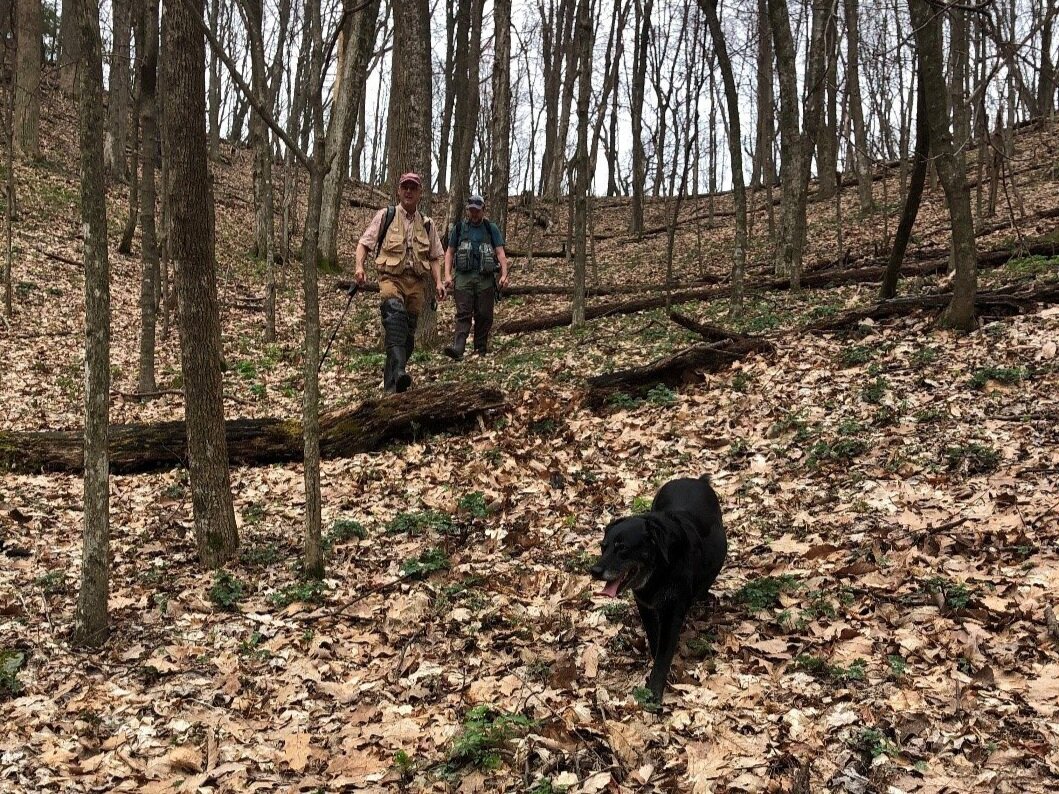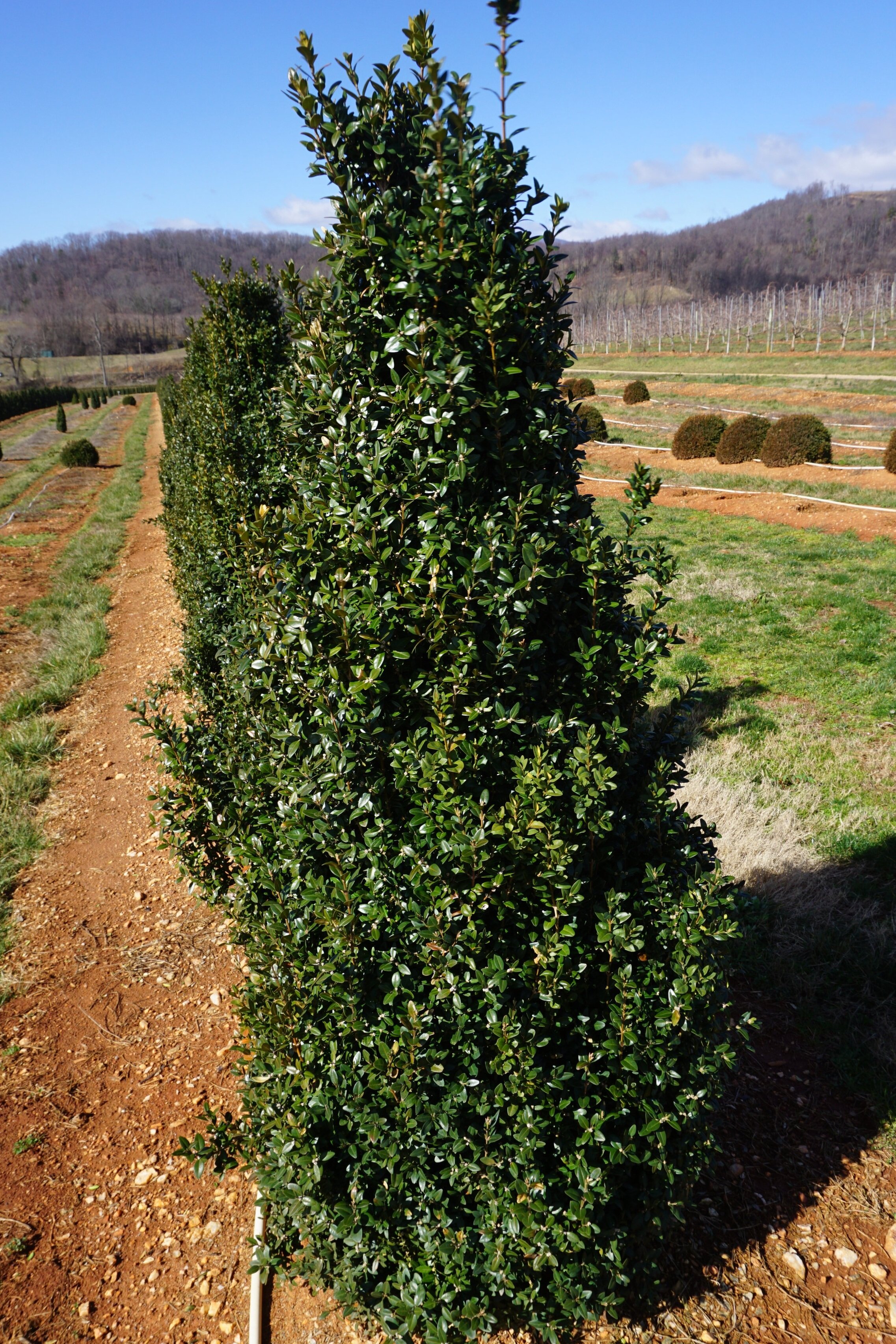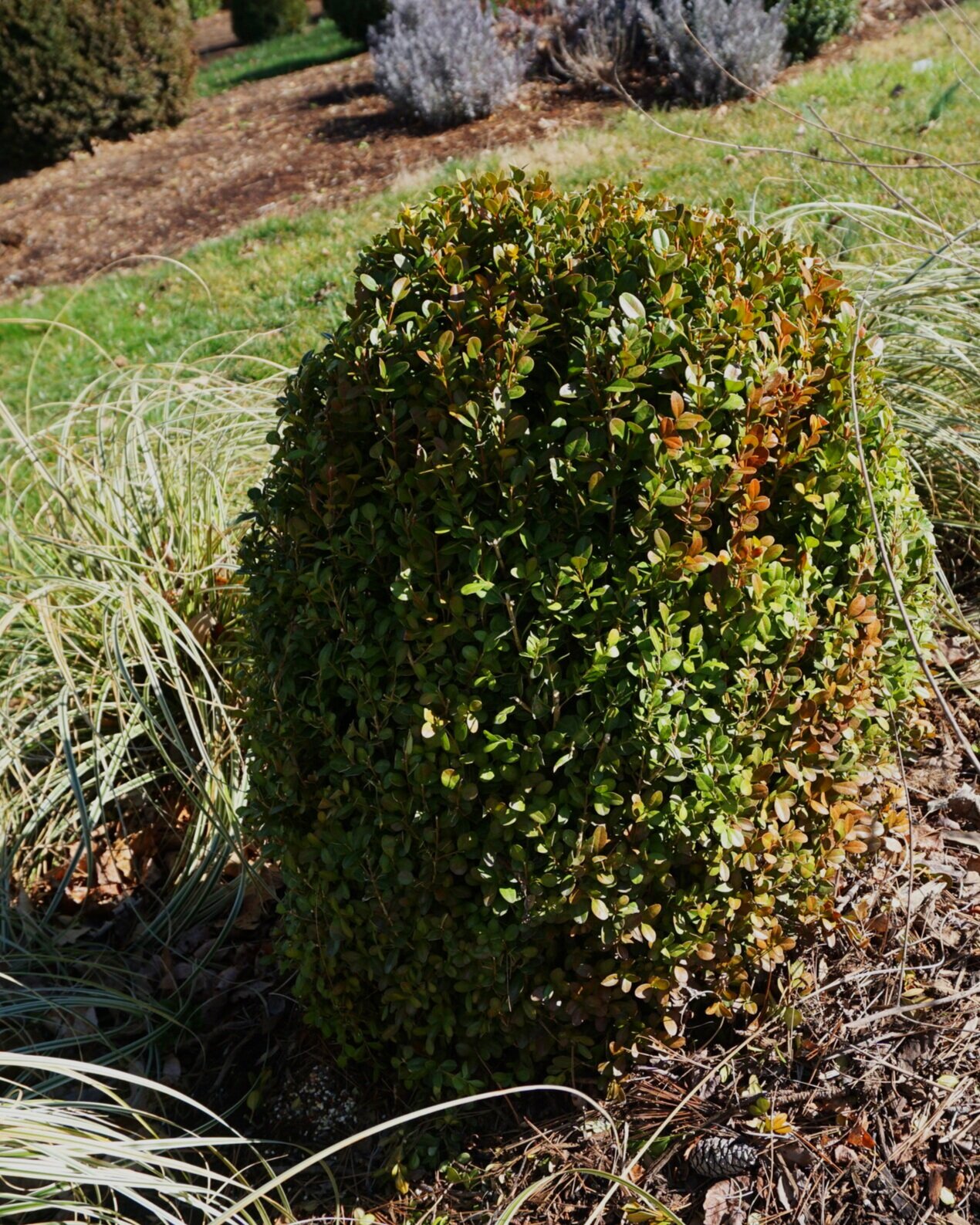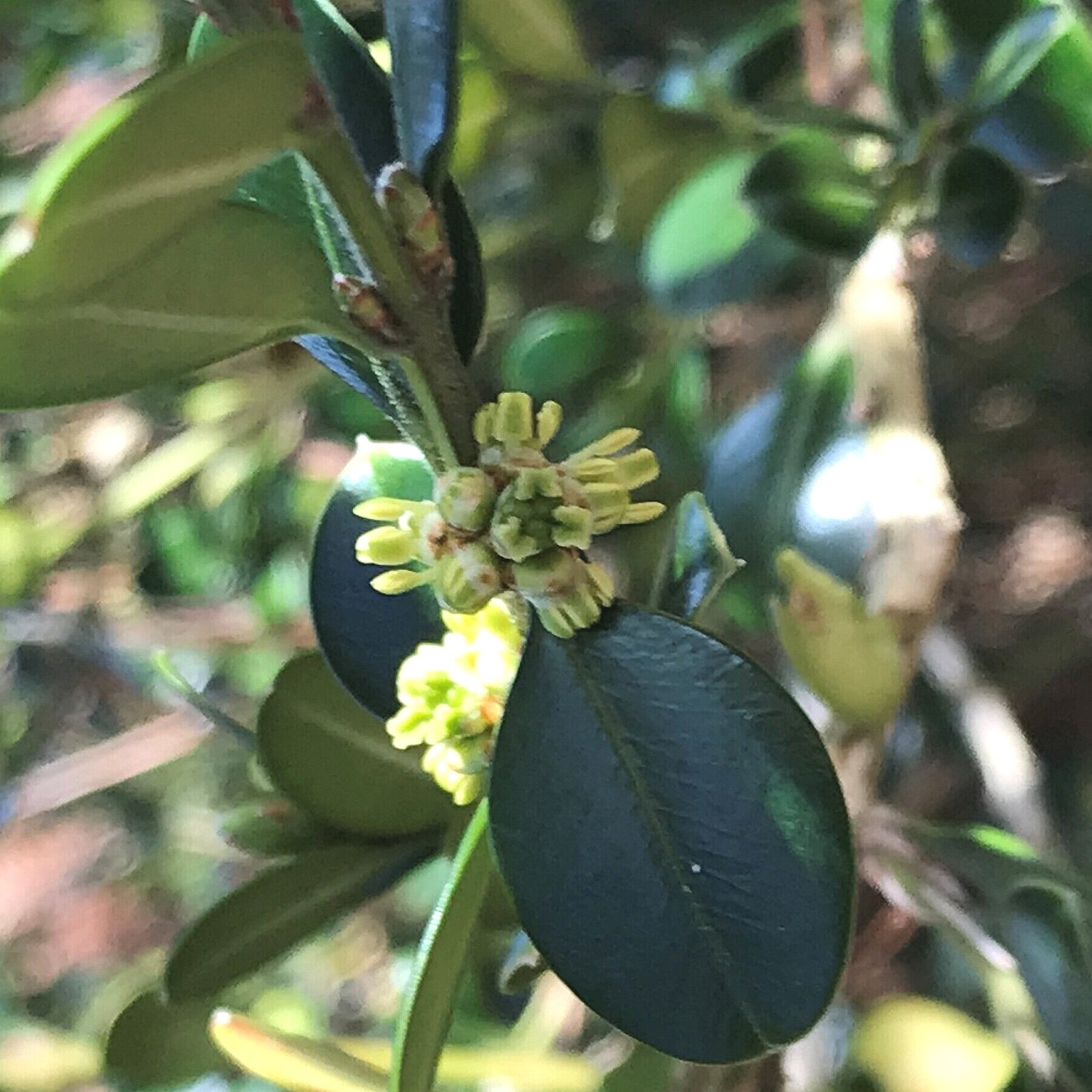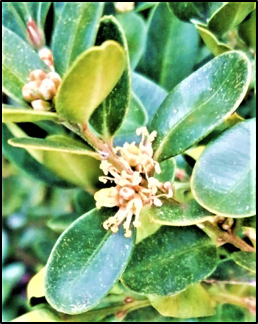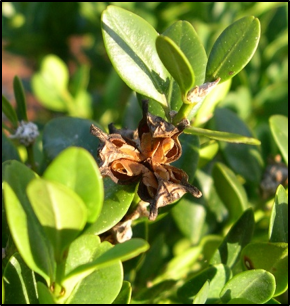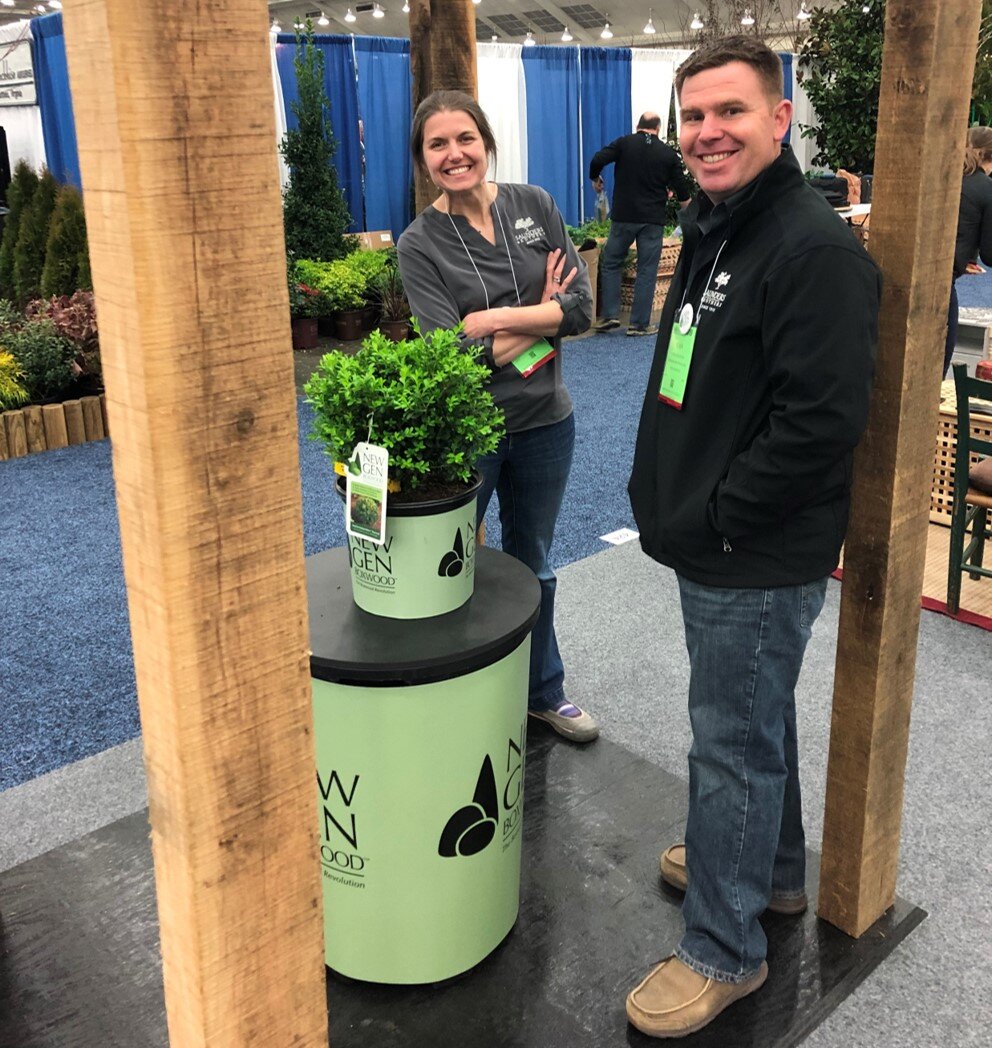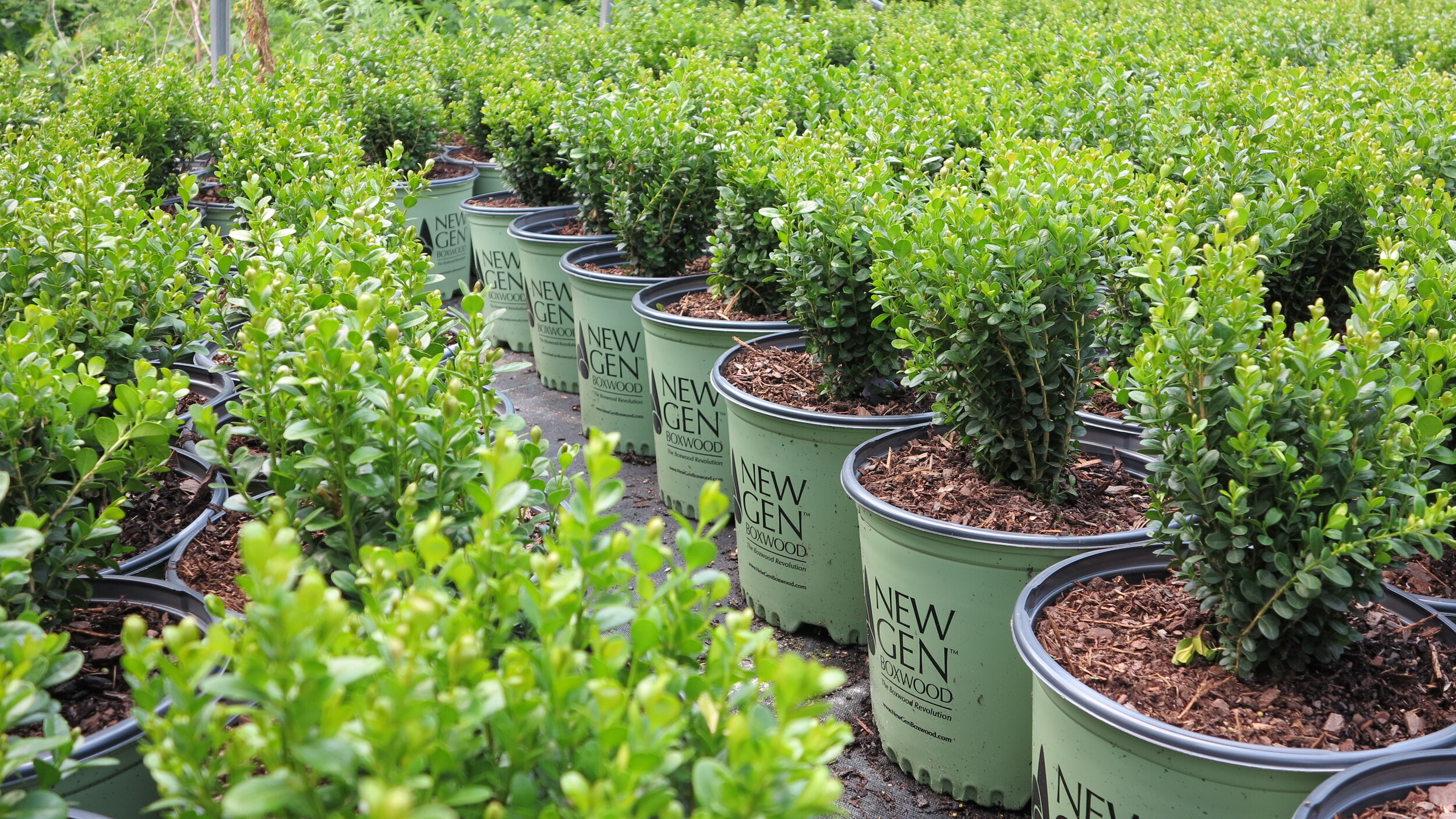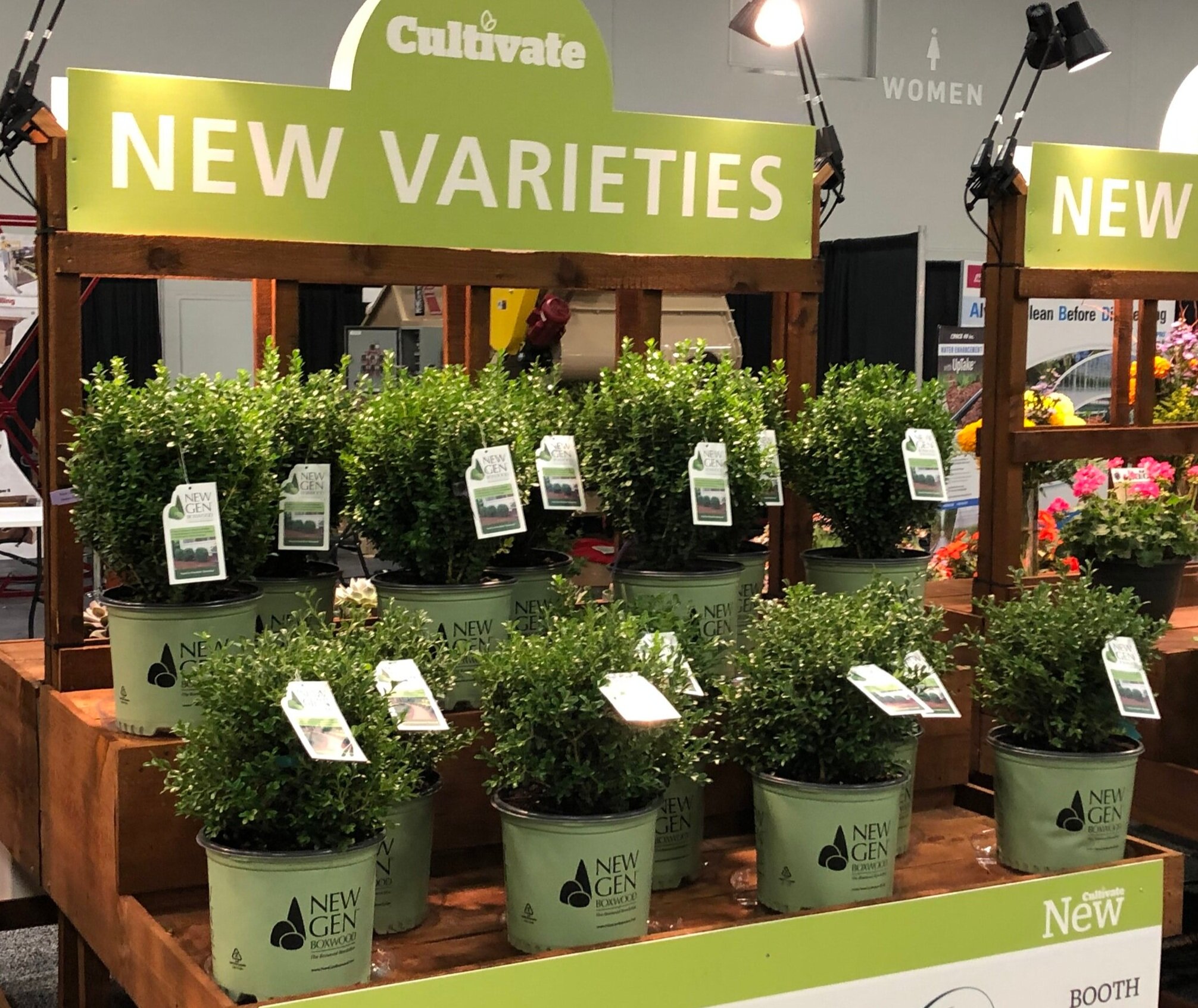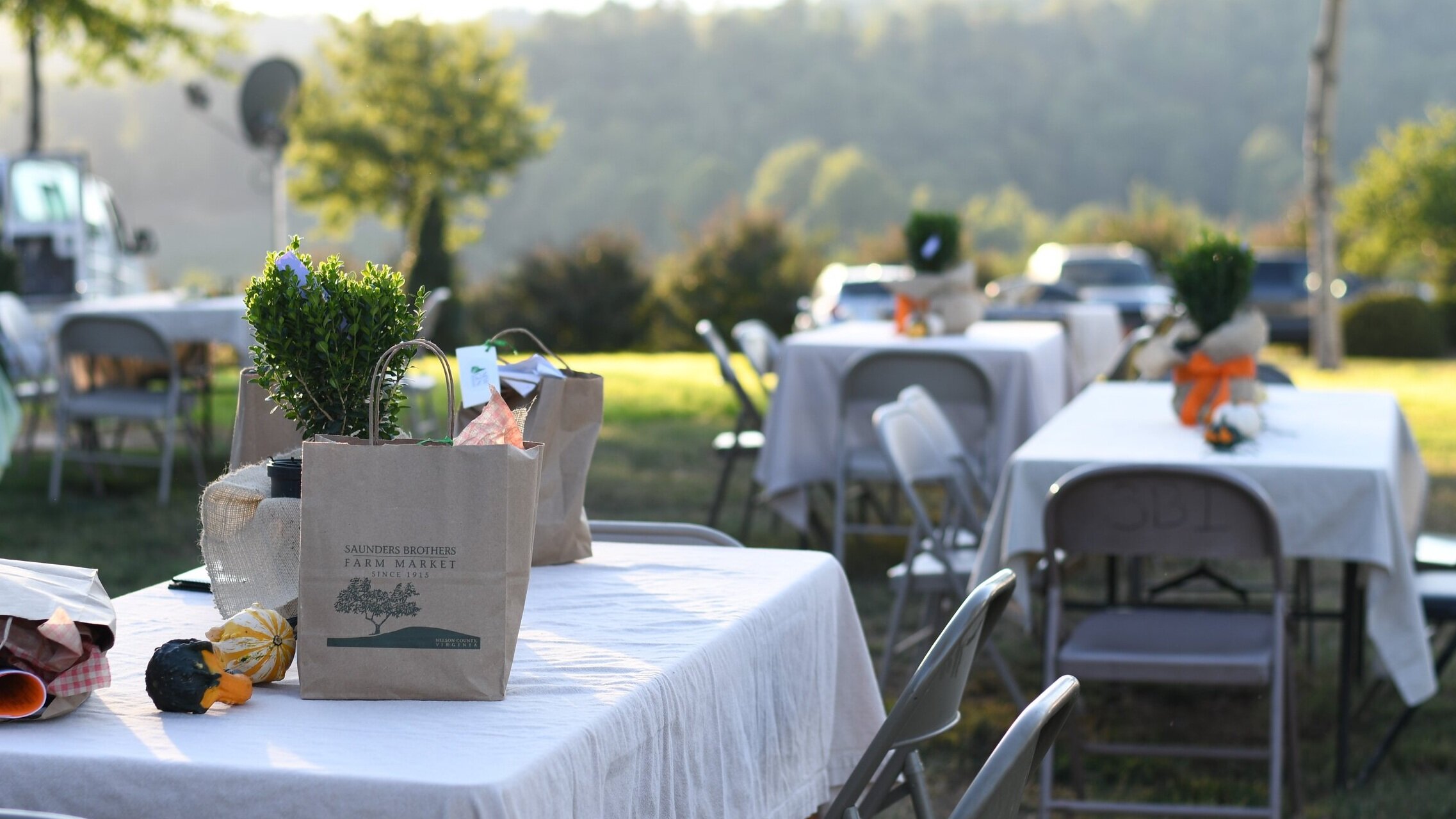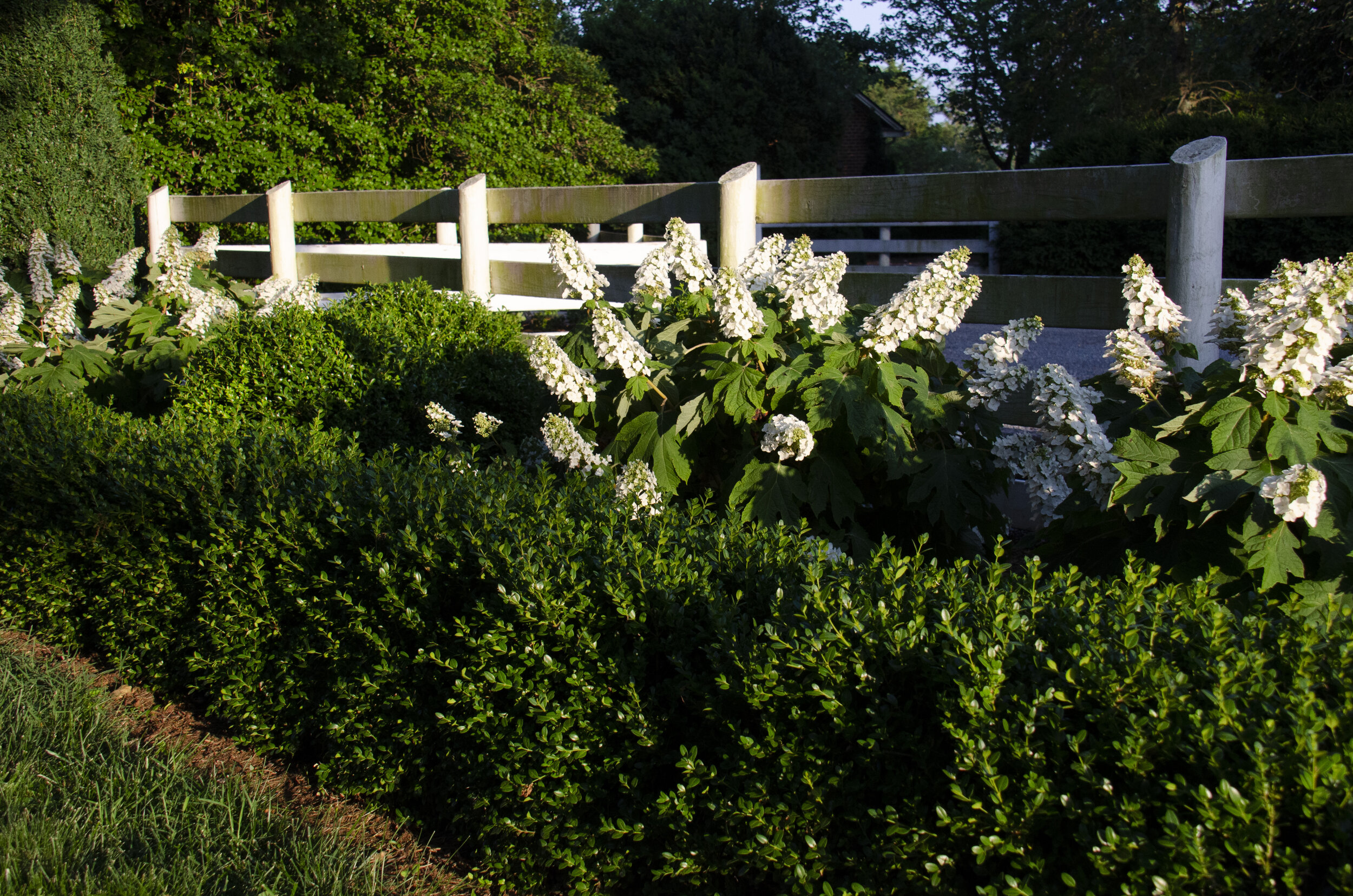Late summer through mid-fall is the most likely time to see Boxwood Blight in landscapes. Shorter days, splashing rains, ideal temperatures from 60°-77° F, and slower drying create an environment in which the disease thrives. Be on the lookout!
Since 2011 when Boxwood Blight was first discovered in the United States, there has been a great deal of research and much has been learned regarding control and living with the disease. The earliest assumption was that any landscape infected by Boxwood Blight would need to be destroyed, however; research has shown there are many steps that can be taken to clean up Boxwood Blight properly. If certain steps are taken early, many landscapes of Buxus sp. can survive and even thrive after Boxwood Blight.
Rubber boots are easily cleaned after being worn in landscapes containing boxwood.
If Boxwood Blight is suspected:
Take samples to testing labs and limit access to the area until results are obtained.
If you suspect the disease in the landscape, you should take great care in collecting samples by double bagging them and taking them to the local Extension office or another testing lab. The area should be roped off or temporarily fenced off until the results are obtained.
If Boxwood Blight is confirmed:
Take great care not to further spread disease.
Do cleanup on dry, sunny days when foliage is dry.
Consider fungicide applications before and during cleanup to control spread.
Wear rubber boots and disposable clothing during cleanup to lessen contamination of clothing and shoes.
Cut and place the infected plants in a plastic bag and take care to minimize leaf litter.
Clean up as much leaf debris as possible. Roots are not believed to carry Boxwood Blight.
Debris should be burned or taken to landfill with care to not let leaves escape.
After cleanup, wash skin, launder or dispose of outer clothing, and wash boots.
Increase airflow in and around remaining plants by thinning and removing lowest limbs.
Do not bury debris as the disease can survive in the soil for long periods of time.
All tools and equipment should be thoroughly cleaned when moved between different gardens or areas.
Mulch to lessen the splashing of spores.
Replant with cultivars that are more resistant to Boxwood Blight.
Monitor boxwood in times of optimal conditions for new infections and flare-ups.
Crews at Saunders Brothers, inc. wear disposable clothing to help avoid introduction of Boxwood Blight that may enter the nursery on their clothing.
If Boxwood Blight is confirmed, you must be diligent and careful in cleanup. Extreme care should be taken to avoid infecting other plants. Choose a time to cleanup when it is sunny and when foliage is dry. The plant is less likely to be sporulating when foliage is dry. Consider applying fungicides to any area where you are working to kill any spores that are present.
Always wear some sort of disposable suit, like disposable Tyvek® coveralls, and rubber boots as they can easily be cleaned. If possible, put a plastic bag over the infected plant and cut the plant off at the base. Take care to catch as much leaf litter as possible. Then, clean up any leaves that fall before disturbing the soil as you do not want to incorporate diseased debris into the soil. After all debris is cleaned up, remove the roots. All debris should be bagged or covered to eliminate the possibility of it blowing or falling out. Do not compost the debris. Burning the debris is the best possible option.
The most effective way to sterilize soil is to burn any debris around the base of the infected plant.
After the cleanup is complete, remove outer clothing and launder or dispose of it. Laundering with detergent and hot water will kill spores. Boots should be thoroughly washed, and all tools and equipment should be carefully cleaned as well. Prune any other boxwood in the landscape to increase airflow to maintain dry foliage. Remove any limbs that touch the ground and might get rain splash, and be sure plants are properly mulched. Continue to monitor the boxwood during environmental conditions conducive to infection.
If planning to replant with boxwood, be sure to choose cultivars that are more resistant to the disease. Saunders Brothers, Inc. and Saunders Genetics have tested and trialed boxwood in search of varieties and cultivars that prevail against Boxwood Blight. Buxus sempervirens ‘Suffruticosa’ (English boxwood) is the most susceptible cultivar, whereas Buxus microphylla, Buxus insularis, and Buxus harlandii species and cultivars tend to have more resistance. It is difficult to completely define groups based on species as we have found exceptions based on plant architecture and structure. Open, more upright plants tend to be less susceptible while short, compact cultivars seem to be more susceptible. NewGen Independence® and NewGen Freedom® offer strong resistance to Boxwood Blight as well as fantastic landscape appeal.
Once the landscape is cleaned and replanted, diligently monitor plants to catch any early signs of re-infection. With a combination of careful clean up, replanting with resistant cultivars, and best management practices to avoid Boxwood Blight, landscapes of Buxus sp. can continue to flourish after Boxwood Blight.
NewGen Freedom® in the field.













